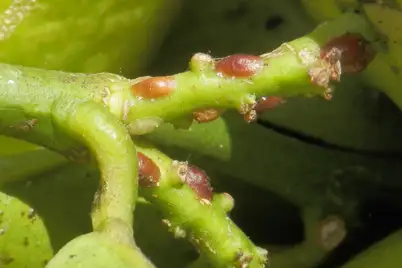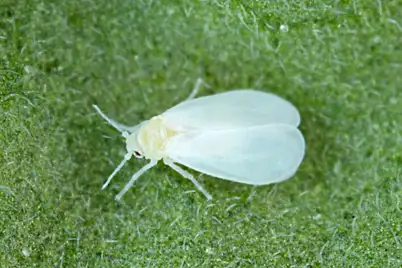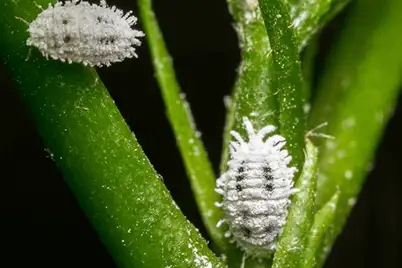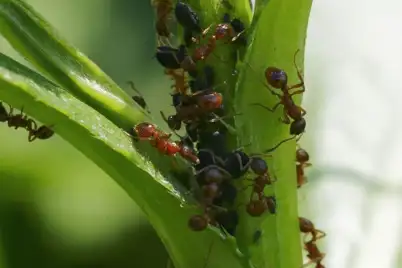Psyllids pass through a life cycle of gradual metamorphosis – egg, nymph, and adult.
Lerp-Forming Psyllids
Adult females lay eggs on leaves, either singly or in batches. They may lay several hundred eggs over their lifetime. Some species like to lay eggs on young leaves, while others prefer mature leaves. First instar nymphs ('crawlers') hatch and crawl to a suitable feeding site, begin feeding and start to build their lerp. Larvae pass through five instars under their ever-expanding lerps, before emerging as tiny winged adults. There are usually several generations per year.
Lilly Pilly Psyllid
Adult females insert their eggs in the margins of freshly expanding leaves. Hatching nymphs move to a suitable position on the underside of a leaf and begin feeding. After the first moult, a shallow pit begins to form under the nymph, which increases in size as the nymph goes through further moults. After the final moult an adult psyllid emerges, and the cycle begins again. Lilly Pilly Psyllid can only complete its life cycle on expanding leaves, not mature leaves.
Gall-Forming Psyllids
Adult females insert groups of eggs into leaves. Nymphs hatch and burrow into the leaves, which causes galls to form. Each gall on a leaf contains one nymph. Eventually the nymphs reach adulthood and emerge from the galls.
Free-Living Psyllids
Eggs are laid on the growing shoots of host plants. Nymphs hatch and pass through five growth stages before adulthood. Adults and nymphs at various growth stages are seen together feeding on the green shoots of plants.
Tomato Potato Psyllid
Eggs are laid on leaf edges or the underside of leaves. Nymphs hatch and pass through five growth stages before adulthood. Nymphs and adults are usually found together on leaves. There are several generations per year.








